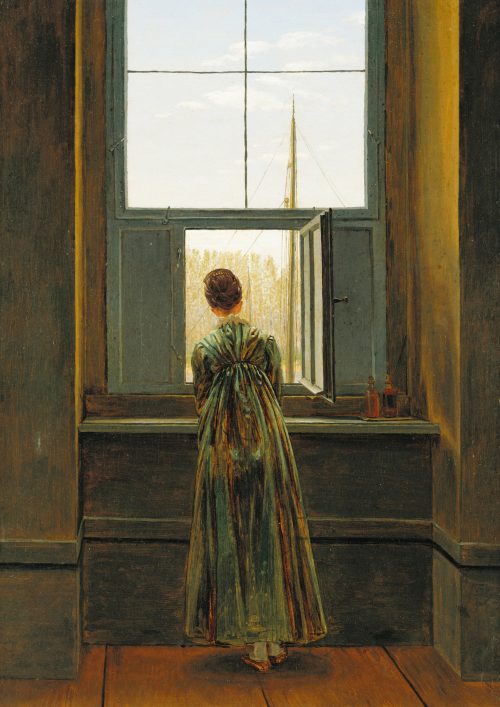
They are rattling breakfast plates in basement kitchens,
And along the trampled edges of the street
I am aware of the damp souls of housemaids
Sprouting despondently at area gates.
Twisted faces from the bottom of the street,
The brown waves of fog toss up to me
And tear from a passer-by with muddy skirts
And vanishes along the level of the roofs.
An aimless smile that hovers in the air
Introduction
The form of the poem, although unrhymed, follows the Spenserian stanza. That means that the poem has nine lines, ending with an Alexandrine. This type of form was used by Edmund Spenser to write The Faerie Queene, one of his most recognized works in which heroic deeds are narrated in an idyllic pastoral fairyland. Yet, Eliot uses this form to convey impressions of a modern city, most probably London.
T. S. Eliot was strongly influenced by French poets, especially by Charles Baudelaire and Jules Laforgue. Hence, in Morning at the Window, T. S. Eliot presents observations and scenes from the modern urban life. These can be related to Baudelaire’s portrait of modern Paris. According to Eliot, in poetry it is crucial to elevate everyday life and to accentuate the quasi-transcendent qualities of modern life. You can read the poem in full here.
Analysis
First Stanza
They are rattling breakfast plates in basement kitchens,
(…)
Sprouting despondently at area gates.
The first stanza sets the scene and the setting of the poem. The lyrical voice starts talking about a “They”. Thus, the lyrical voice appears to be an observer who looks at this scene with distant sight (“They are rattling breakfast plates in basement kitchens”). The images that the lyrical voice describes are object correlatives, meaning that the objects and situations depicted correspond to certain ideas and emotions in the lyrical voice’s and the reader’s mind. Then, the lyrical voice will state that he/she is in the street and aware of what goes on around him/her: “And along the trample edges of the street/ I am aware of the damp souls of housemaids/Sprouting despondently at area gates”. The lyrical voice shows images of poverty in modern London and describes them as everyday scenes, without describing individualities or moralizing his/her surroundings. This first stanza presents a very human, but distant picture; everyday life is narrated but not in individual depth. The lyrical voice chooses to narrate what he/she observes, and focuses on his point of view.
Second Stanza
The brown waves of fog toss up to me
(…)
And vanishes along the level of the roofs.
The second stanza furthers on the characteristics and occupants of the modern city. The lyrical voice describes the air and its pollution (“The brown waves of fog toss up to me”), being a consequence of the industrial and modern city. Just like the air comes to him in a particular way, he/she sees people in the streets accordingly. Notice how they are described: “Twisted faces from the bottom of the street,/ And tear from a passer-by with muddy skirts”. People appear to be sad and dirty; nothing in this portrait of modern London seems to be cheerful or positive, as poverty reigns in the streets. Furthermore, the lyrical voice describes a possible attempt to revert the picture in the city, but it is useless (“An aimless smile that hovers in the air/And vanishes along the level of the roofs”). This stanza, and the entire poem, present a distinctly modern view of a city, most probably London, by focusing on the small details of everyday life and elevating them to “quasi-transcendent qualities”.




0 Comments